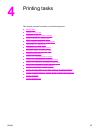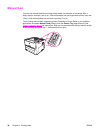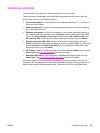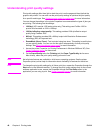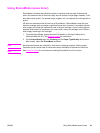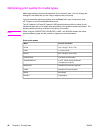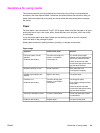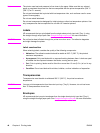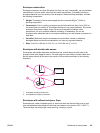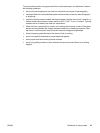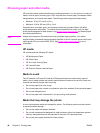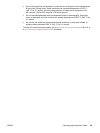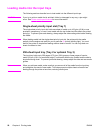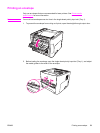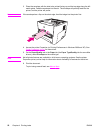
Envelope construction
Envelope construction is critical. Envelope fold lines can vary considerably, not only between
manufacturers, but also within a box from the same manufacturer. Successful printing on
envelopes depends upon the quality of the envelopes. When selecting envelopes, consider
the following components:
●
Weight: The weight of the envelope paper should not exceed 90 g/m
2
(24 lb), or
jamming might result.
● Construction: Prior to printing, envelopes should lie flat with less than 6 mm (0.25 in.)
curl and should not contain air. Envelopes that trap air may cause problems. Do not use
envelopes that contain clasps, snaps, tie strings, transparent windows, holes,
perforations, cut outs, synthetic materials, stamping, or embossing. Do not use
envelopes with adhesives that do not require moistening, but rely instead on pressure to
seal them.
● Condition: Make sure that the envelopes are not wrinkled, nicked, or otherwise
damaged. Make sure that the envelopes do not have any exposed adhesive.
● Sizes: From 90 x 160 mm (3.5 x 6.3 in.) to 178 x 254 mm (7 x 10 in.).
Envelopes with double-side seams
An envelope with double-side-seam construction has vertical seams at both ends of the
envelope rather than diagonal seams. This style might be more likely to wrinkle. Make sure
that the seam extends all the way to the corner of the envelope as shown in the following
illustration:
1 acceptable envelope construction
2 unacceptable envelope construction
Envelopes with adhesive strips or flaps
Envelopes with a peel-off adhesive strip or with more than one flap that folds over to seal
must use adhesives compatible with the heat and pressure in the printer: 200° C (392° F).
The extra flaps and strips might cause wrinkling, creasing, or jams.
ENWW Guidelines for using media 45



